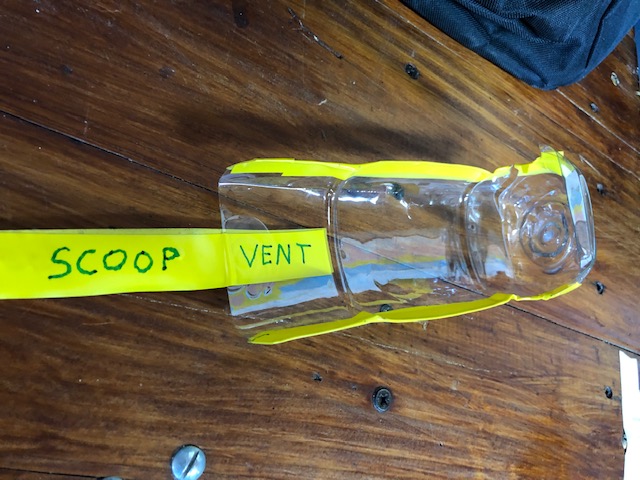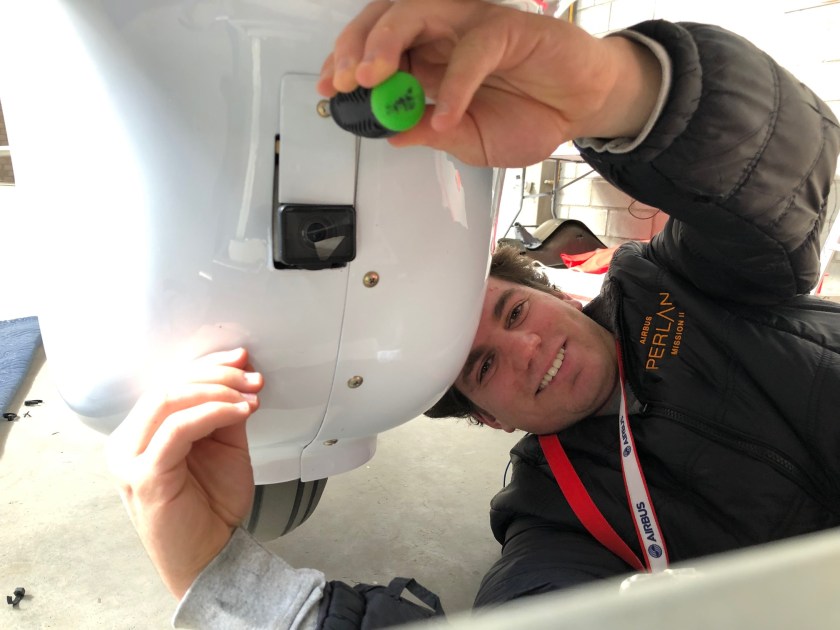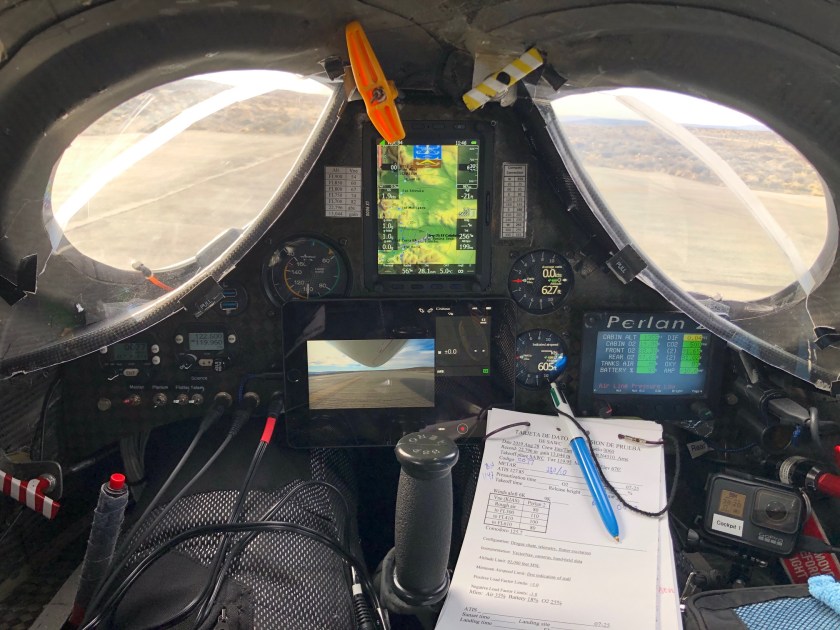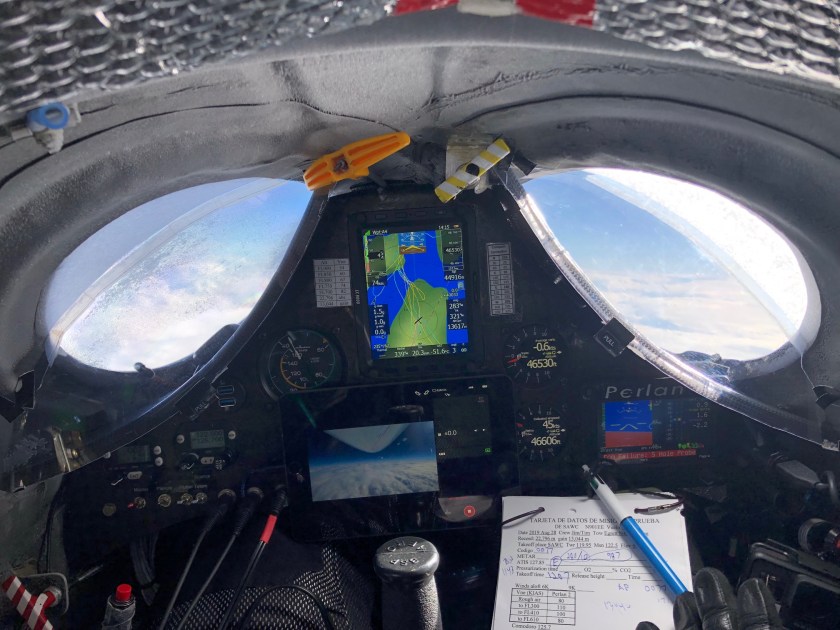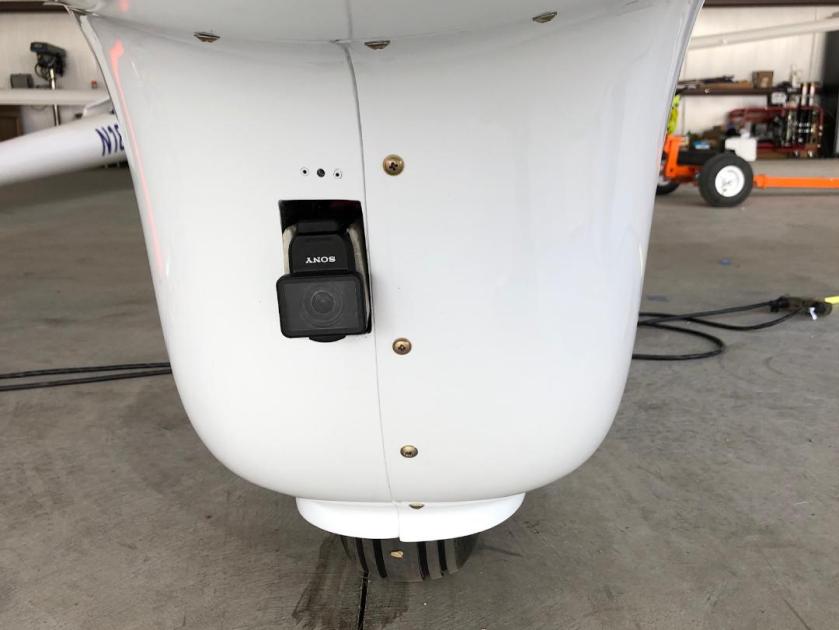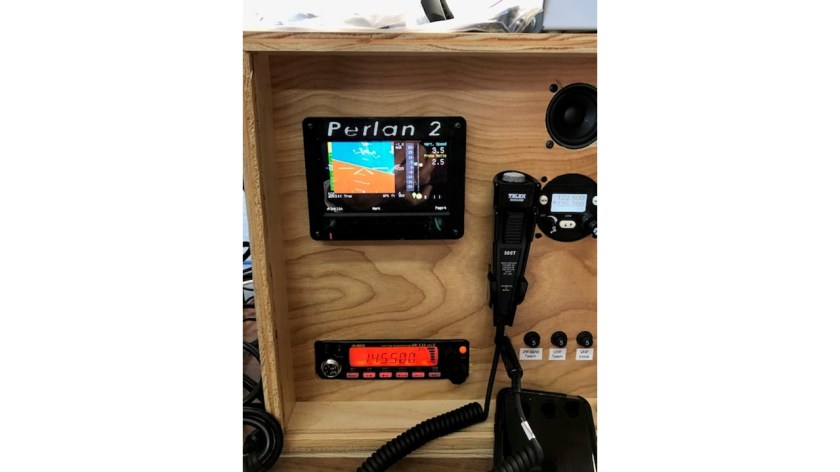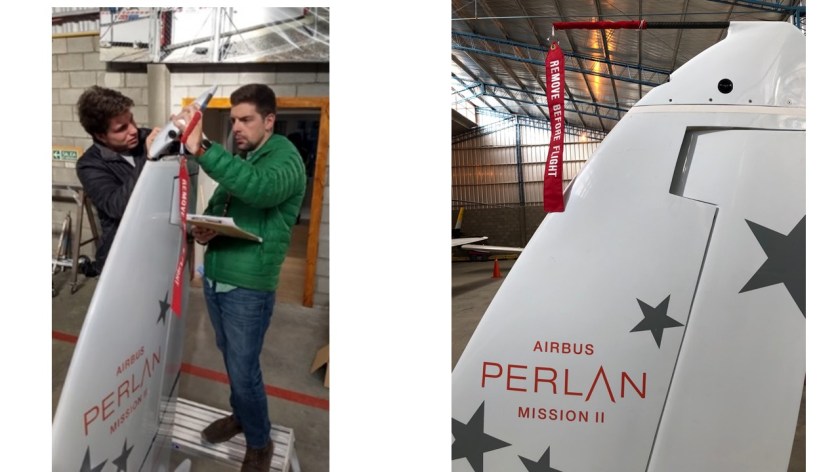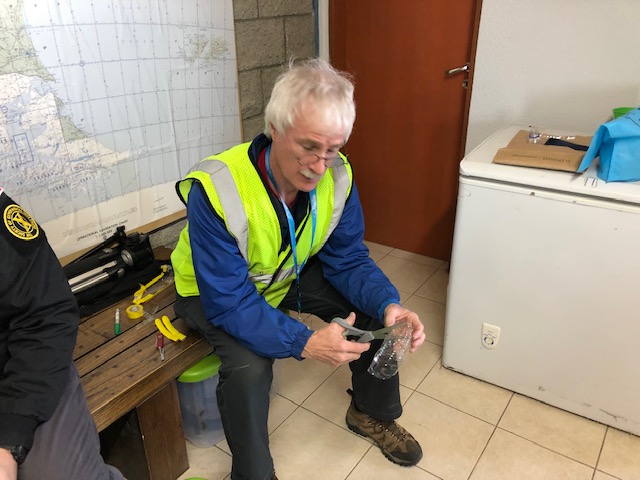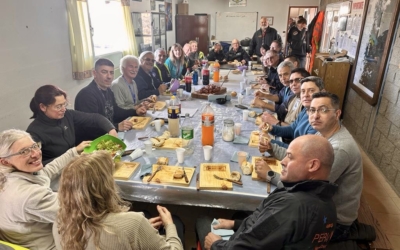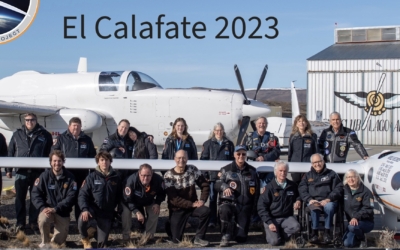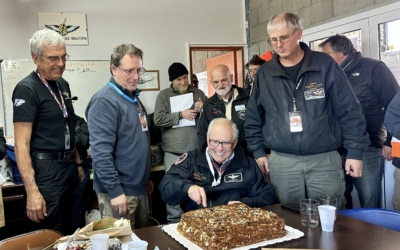In the non-wave season Airbus Perlan Mission II took the opportunity to prioritize desirable upgrades to our systems. 2019 was extremely productive for improvements and completely new add-ons. After the first wave flight of the year, Jim summed it up:
“Flight 0060 was a testament to Morgan’s work…his many upgrades like the plenum heaters, extra oxygen sensors, flutter system, second battery monitor, VectorNav data acquisition system and numerous other items all worked and added to the mission. Thanks, Morgan!
Greg and Mike’s work such as the new left inner eye window, emergency oxygen, CRU-60 mounts, belly camera, tail tip probe mount, etc. added to the comfort and safety of the crew. Thanks, Greg and Mike!
And the El Calafate Team gets kudos for its awesome work getting the Perlan 2 ready and airborne. Muchas Gracias, Todos!”
In the first photo on the ground you can see the clear plenums isolate about 75% of eyeball windows from the main cabin. This allows solar and new electrical heating of that small area. It also prevents moisture from pilots’ bodies circulating to the window surface. (Their breathing is completely contained in the masks and rebreather system.) Note the new belly camera view on the front cockpit panel in that picture. Also note the Life Support Systems Display (LSSD) is on the home page indicating all telemetry parameters are in the green.
The second photo is 2.5 hours and 46,000 feet later. Note the cabin has frosted ceiling but the clear view plenum panels keep the forward ¾ of the windows frost free. The belly camera view is back-up should window visibility become an issue. (Perlan plans for double redundancy at low power drain whenever possible.)
Also of interest is Morgan’s new Attitude Heading Reference System (AHRS) now available from the IMU data displayed on the LSSD in the bottom right corner of the second photo. This shows CapCom when the Perlan 2 is turning and it displays a flight path marker. When the marker is on the horizon the Perlan 2 is flying exactly level.
Another improvement was a more efficient air scoop which provides a breeze against Jim’s neck while towing to about 12,000 feet. (Less body moisture while dressed for cold but working hard to keep the tow plane in sight.) Around 12,000 feet the scoop is retracted and the hatches almost self-seal. Usually no air injection is needed, that’s how good the new (2018) hatches fit. Alan Murray was an invaluable addition to the team for many reasons – air scoop production was only one of those reasons.
On the top of the tail tip Greg built a strong mount for a 5 hole probe which measures air flow. This data is now available on the LSSD in the cockpit and in CapCom. By comparing the difference in pressures between the holes, the angle of attack and angle of side slip can be calculated. SpinGarage from Calaifornia built the custom probe for Perlan. You can see just the tip of the probe in the tail camera videos.
Another critical upgrade was automating the emergency oxygen system to activate when the cabin altitude gets too high. This design and fabrication took Greg Scates weeks of off-season time. There’s a brief video documenting that development. There is a spring which pulls a cable which activates the pin of both bottles simultaneously. First we tested the spring, then he controlled the recoil of the spring in a tube, then he tested a different actuator, then he built a control box with a pressure (altitude) activated switch.
So whether low tech or high tech, the upgrades for Perlan 2 make it ready to soar into the stratosphere! Perlan Soars! Jackie

